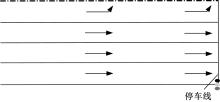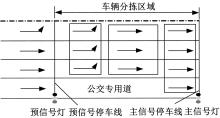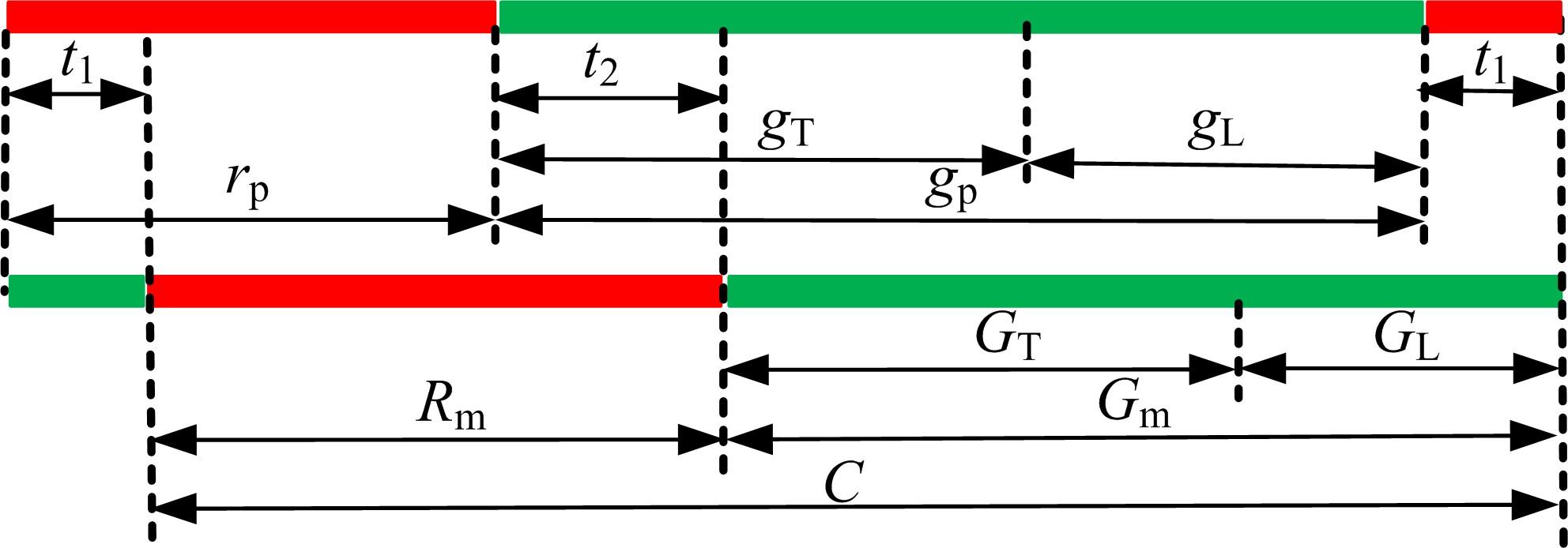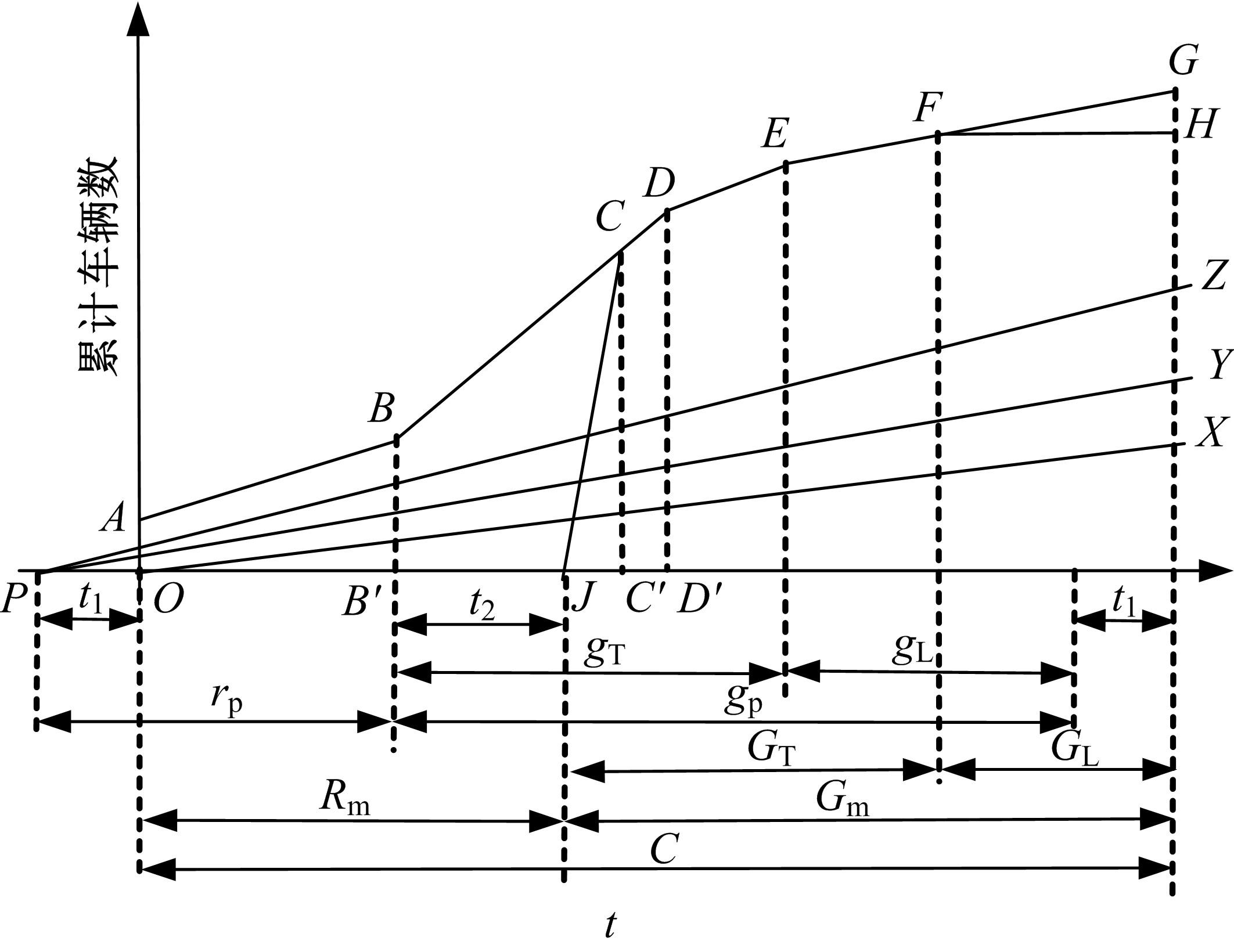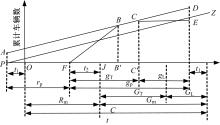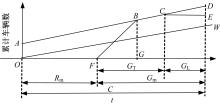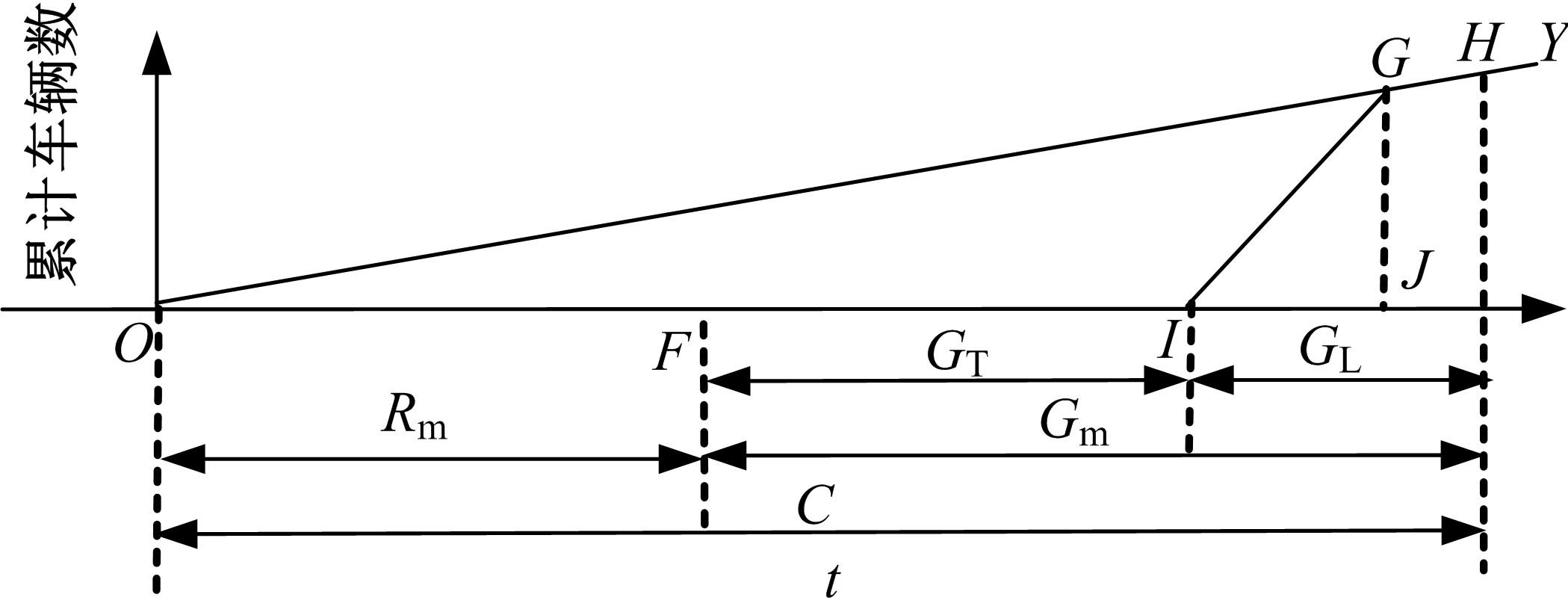吉林大学学报(工学版) ›› 2023, Vol. 53 ›› Issue (2): 448-456.doi: 10.13229/j.cnki.jdxbgxb20210639
考虑柔性车道设置的公交优先信号设计
- 1.吉林大学 交通学院,长春 130022
2.江西省赣州市交通运输局,江西 赣州 341008
Design of bus priority signal considering flexible lane setting
Jin LI1( ),Yu-tong SUN1,Xiao-zhong WEI2,Yu-ling JIAO1(
),Yu-tong SUN1,Xiao-zhong WEI2,Yu-ling JIAO1( )
)
- 1.College of Transportation,Jilin University,Changchun 130022,China
2.Transportation Bureau of Ganzhou City,Ganzhou 341008,China
摘要:
通过考虑柔性车道设置,针对带有左转专用相位的公交优先十字交叉口,结合预信号系统进行车辆和行人延误分析。在交叉口某一进口道采用该设计,分析主信号和预信号处车辆到达和离开过程,对采用柔性车道设置前后的公交车、直行社会车辆和左转车辆的延误变化进行计算。结果表明:在带有左转专用相位的公交优先十字交叉口某一进口道采用柔性车道设置后,当交叉口处于饱和状态时,公交车辆延误显著减少,左转车辆延误和直行车辆人总延误皆有所减少。
中图分类号:
- U491
| 1 | 杜丹丹, 李铁柱. 锯齿形公交优先进口道的设计与延误分析[J]. 佛山科学技术学院学报: 自然科学版, 2009, 27(2): 9-13. |
| Du Dan-dan, Li Tie-zhu. Design and delay analysis of the priority import path of the jagged bus[J]. Journal of Foshan Institute of Science and Technology(Natural Science Edition), 2009, 27(2): 9-13. | |
| 2 | Wu J, Hounsell N. Bus priority using pre-signals[J]. Transportation Research, Part A: Policy & Practice, 1998, 32(8): 563-583. |
| 3 | Long K. Bus priority signal control at isolated intersection[C]∥International Conference on Intelligent Computation Technology and Automation, Changsha, China, 2008: 234-237. |
| 4 | Guler S I, Menendez M. Analytical formulation and empirical evaluation of pre-signals for bus priority[J]. Transportation Research, Part B: Methodological, 2014, 64: 41-53. |
| 5 | He H, Guler S I, Menendez M. Adaptive control algorithm to provide bus priority with a pre-signal[J]. Transportation Research, Part C: Emerging Technologies, 2016, 64: 28-44. |
| 6 | 邵俊, 杨晓光, 史春华. 部分锯齿形公交优先进口道的交通设计与分析[J]. 同济大学学报: 自然科学版, 2001, 29(10): 1175-1180. |
| Shao Jun, Yang Xiao-guang, Shi Chun-hua. Traffic design and analysis of some jagged bus priority import roads[J]. Journal of Tongji University(Natural Science Edition), 2001, 29(10): 1175-1180. | |
| 7 | 张卫华,王炜.基于公交优先通行的交叉口预信号设置方法研究[J].公路交通科技,2004,21(6):101-104. |
| Zhang Wei-hua, Wang Wei. Study on the pre-signal setting method of intersection based on bus priority traffic[J]. Road Traffic Technology, 2004, 21(6): 101-104. | |
| 8 | 张卫华, 陆化普. 公交优先的预信号控制交叉口车辆延误分析[J]. 中国公路学报, 2005, 18(4): 78-82. |
| Zhang Wei-hua, Lu Hua-pu. Bus priority pre-signal control intersection vehicle delay analysis[J]. China Highway Journal, 2005, 18(4): 78-82. | |
| 9 | 张斌华, 成卫. 预信号公交优先交叉口协调控制策略研究[J]. 公路与汽运, 2016(5): 28-32. |
| Zhang Bin-hua, Cheng Wei. Study on the coordination control strategy of pre-signal bus priority intersection[J]. Roads and Motor Transport, 2016(5): 28-32. | |
| 10 | 宋现敏, 张明业, 李振建, 等. 动态公交专用道的设置及其仿真分析评价[J]. 吉林大学学报: 工学版, 2020, 50(5): 1677-1686. |
| Song Xian-min, Zhang Ming-ye, Li Zhen-jian, et al. Setting of dynamic bus lane and its simulation analysis and evaluation[J]. Journal of Jilin University(Engineering and Technology Edition), 2020, 50(5): 1677-1686. |
| [1] | 张惠臻,高正凯,李建强,王晨曦,潘玉彪,王成,王靖. 基于循环神经网络的城市轨道交通短时客流预测[J]. 吉林大学学报(工学版), 2023, 53(2): 430-438. |
| [2] | 宋现敏,张明业,李振建,王鑫,张亚南. 动态公交专用道的设置及其仿真分析评价[J]. 吉林大学学报(工学版), 2020, 50(5): 1677-1686. |
| [3] | 别一鸣,姜凯,汤茹茹,王琳虹,熊昕宇. 考虑方案过渡影响的单点交通控制时段划分方法[J]. 吉林大学学报(工学版), 2019, 49(6): 1844-1851. |
| [4] | 徐洪峰, 高霜霜, 郑启明, 章琨. 信号控制交叉口的复合动态车道管理方法[J]. 吉林大学学报(工学版), 2018, 48(2): 430-439. |
| [5] | 王海玮, 温惠英, 刘敏. 夜间环境驾驶员精神负荷的生理特性评估与实验[J]. 吉林大学学报(工学版), 2017, 47(2): 420-428. |
| [6] | 姜桂艳, 刘彬, 隋晓艳, 马明芳. 基于IC卡收费系统的公交客流信息实时采集方法[J]. 吉林大学学报(工学版), 2016, 46(4): 1076-1082. |
| [7] | 魏丽英, 李鸣君. 考虑诱导影响的公交优先信号配时模型[J]. 吉林大学学报(工学版), 2016, 46(3): 777-784. |
| [8] | 宗芳, 王占中, 贾洪飞, 焦玉玲, 吴杨. 基于支持向量机的通勤日活动-出行持续时间预测[J]. 吉林大学学报(工学版), 2016, 46(2): 406-411. |
| [9] | 李世武, 徐艺, 孙文财, 王琳虹, 郭梦竹, 柴萌. 基于瞳孔直径的撞固定物冲突自反馈识别方法[J]. 吉林大学学报(工学版), 2016, 46(2): 418-425. |
| [10] | 潘义勇, 马健霄, 孙璐. 基于可靠度的动态随机交通网络耗时最优路径[J]. 吉林大学学报(工学版), 2016, 46(2): 412-417. |
| [11] | 赵淑芝, 梁士栋, 马明辉, 刘华胜, 朱永刚. 信号交叉口实时排队长度估计[J]. 吉林大学学报(工学版), 2016, 46(1): 85-91. |
| [12] | 马旭辉, 刘小明, 张金金. 考虑公交优先的过饱和交叉口交通信号控制[J]. 吉林大学学报(工学版), 2015, 45(3): 748-754. |
| [13] | 刘华胜,赵淑芝,朱永刚,李晓玉. 基于有效路径的轨道交通接运线路设计模型[J]. 吉林大学学报(工学版), 2015, 45(2): 371-378. |
| [14] | 祝进城,肖峰,帅斌,刘晓波. 城市出租车拥挤收费[J]. 吉林大学学报(工学版), 2015, 45(1): 89-96. |
| [15] | 游峰, 张荣辉, 王海玮, 徐建闽, 温惠英. 欠驱动半挂汽车列车的运动建模与跟踪控制[J]. 吉林大学学报(工学版), 2014, 44(5): 1296-1302. |
|
